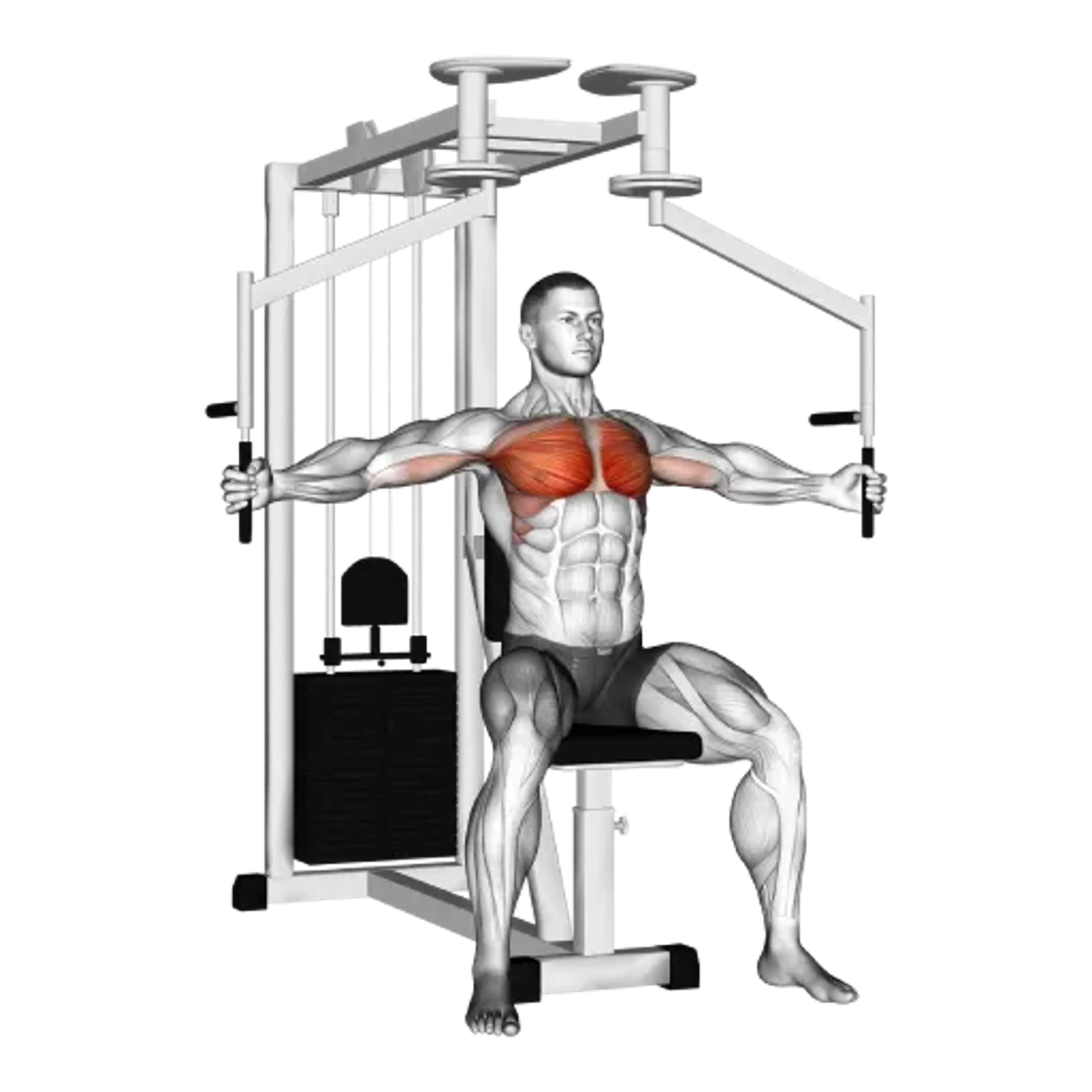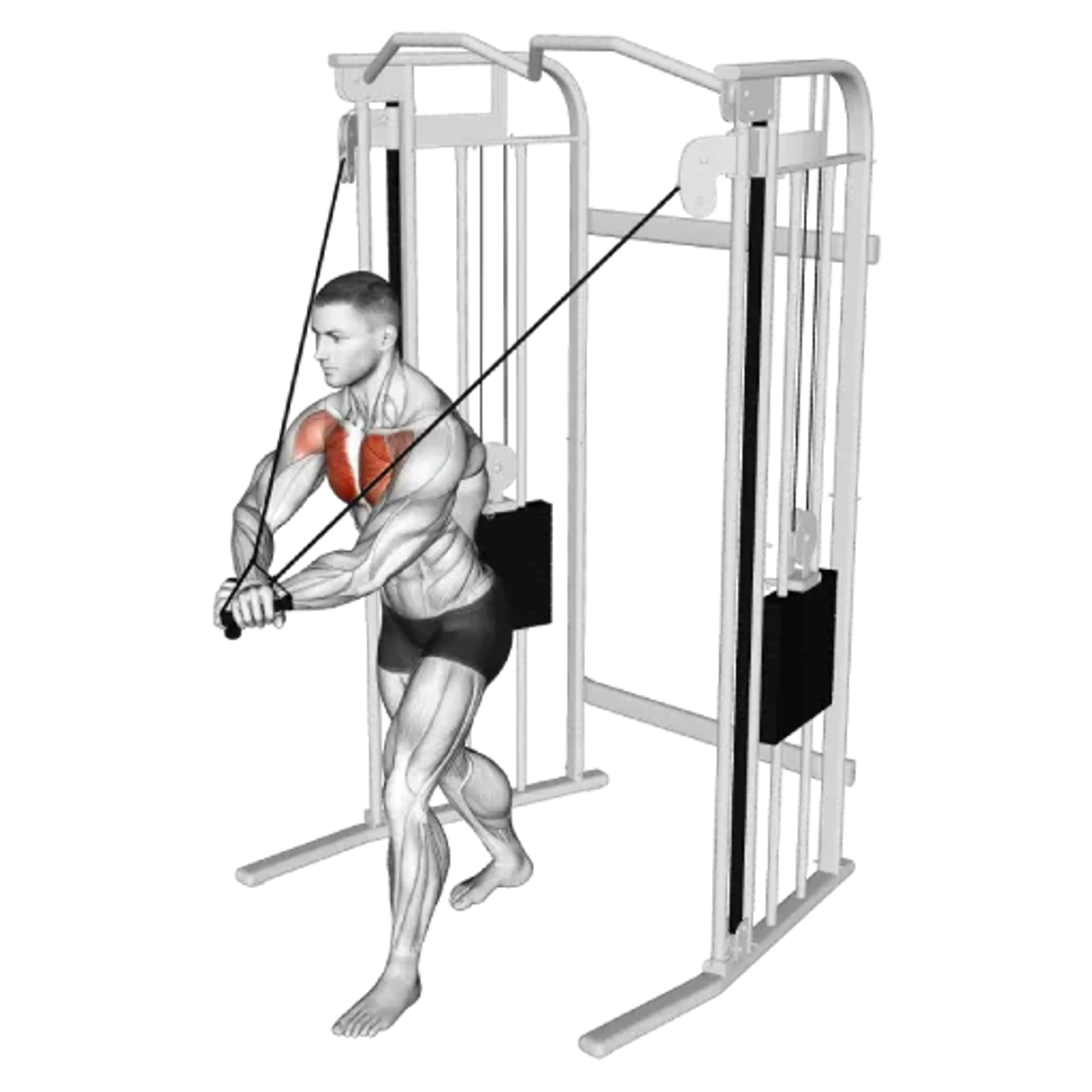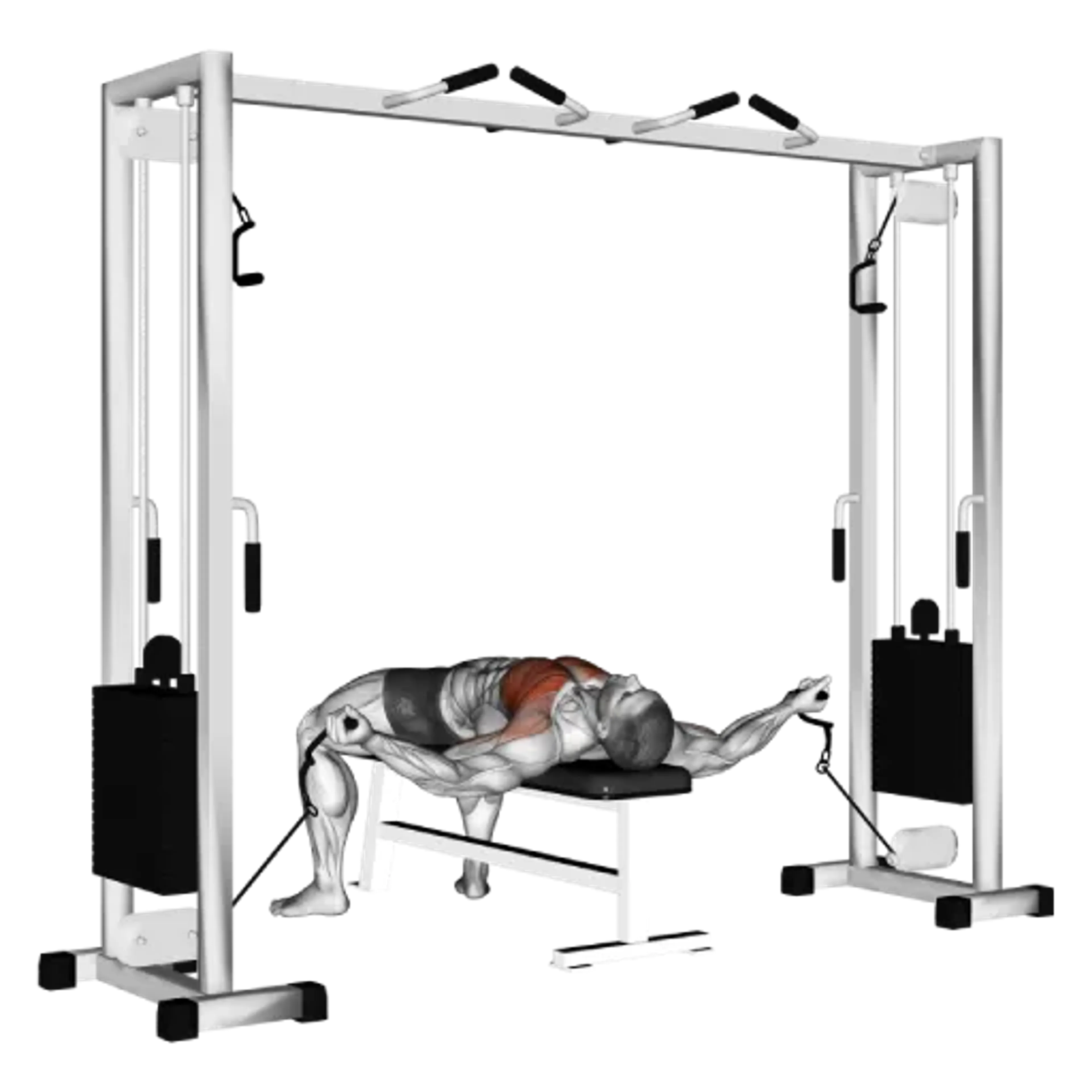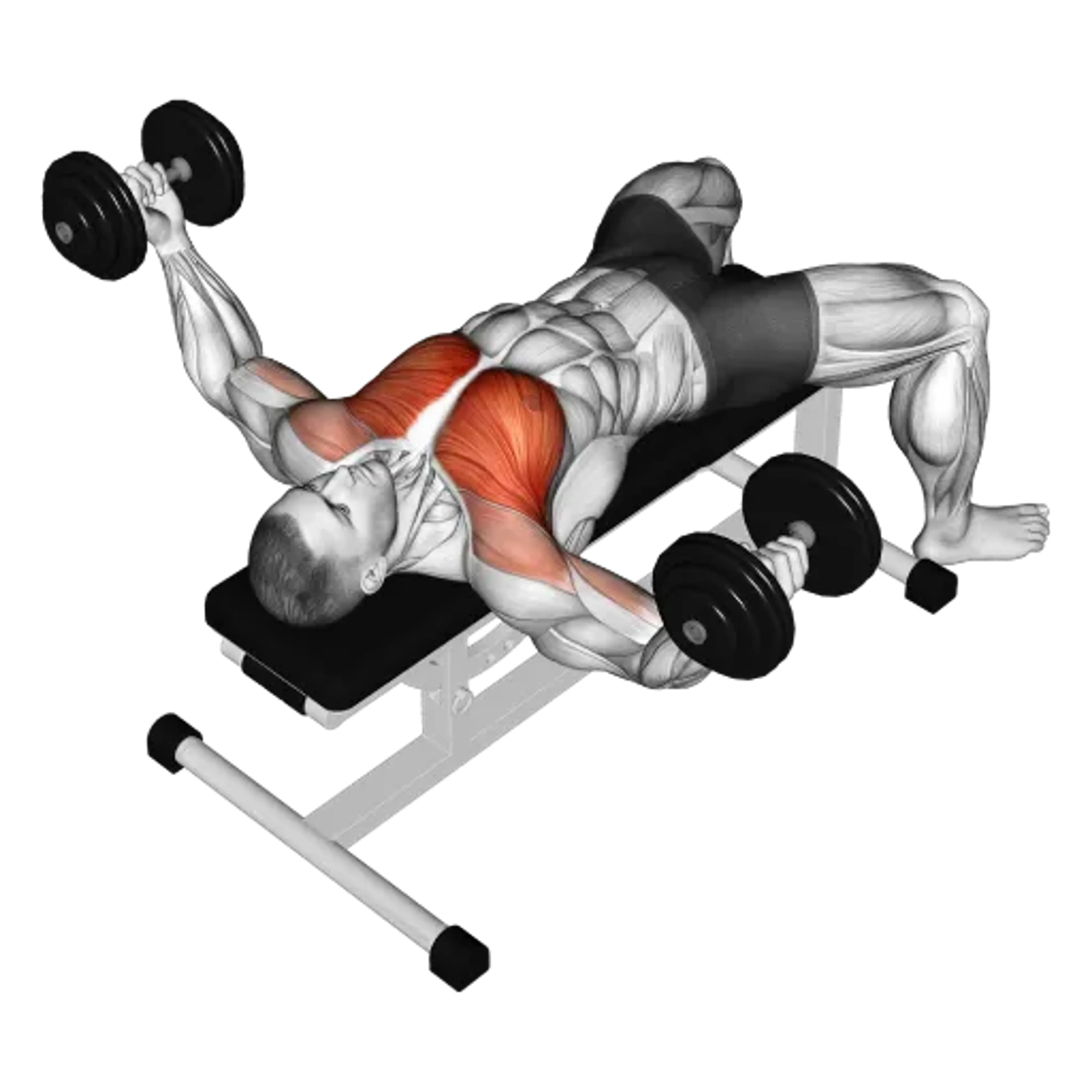Low Cable Chest Fly

Overview
- Primary Focus:
- Chest.
- Equipment:
- Cable.
- Difficulty:
- Intermediate.
General Information
Low Cable Chest Fly is an isolation exercise that primarily targets the chest and also engages the front shoulders and biceps to a lesser extent. It is an intermediate-level movement that uses low pulley positions to create an upward arcing path, biasing the upper chest while keeping constant cable tension through the range of motion.
Use it in the gym when a cable station is available and you want smooth resistance without the joint stress that can come from heavy free-weight flyes. It excels for hypertrophy, mind–muscle connection, and targeted upper-chest activation at moderate loads and controlled tempos.
Setting the pulleys low encourages shoulder flexion as you bring the handles upward and inward, emphasizing the clavicular fibers. Choose this variation when your goal is to bring up the upper chest or to finish a pressing session with focused isolation work. Compared with Middle Cable Chest Fly or High Cable Chest Fly, the low setup shifts effort higher on the chest as the line of pull ascends.
Expect a strong squeeze at the top when the handles meet near upper chest level. Keep a slight, fixed elbow bend and focus on bringing the upper arms across the body rather than lifting with the traps to maintain pec tension and avoid shoulder irritation.
Muscles Worked
- Pectoralis Major
- Primary
- Deltoid
- High
- Serratus Anterior
- Medium
- Rectus Abdominis
- Low
Instructions
- Set both pulleys to the lowest setting and attach single handles. Stand centered, feet staggered, and grasp the handles with palms facing forward or slightly in.
- Step forward to create light tension, brace the core, and set shoulder blades down and back without flaring the ribcage.
- Begin with arms slightly behind the torso and elbows softly bent (about 15–25°). Keep this elbow angle fixed throughout the set.
- Sweep the hands upward and inward in an arcing path to meet around upper-chest/neck height. Squeeze the pecs without shrugging the shoulders.
- Pause briefly at the top to feel the contraction, keeping ribs down and glutes lightly engaged to avoid overextension.
- Lower slowly along the same arc until you feel a gentle stretch across the chest without anterior shoulder discomfort.
- Repeat for the target reps, keeping tempo controlled and tension on the chest rather than the biceps or traps.
Common Mistakes
Injuries
Low Cable Chest Fly is a medium risk exercise when performed with proper technique.
Common strain points include the front of the shoulder and the biceps tendon if the elbows extend too far back or the shoulder shrugs. Keep the elbow angle fixed, control the stretch, and avoid locking the arms straight.
Reduce load, shorten the range slightly, or move the torso a few degrees forward if you feel anterior shoulder pinch. Progress by adding small weight increments or slowing the lowering phase rather than chasing heavy stacks.
Alternative Exercises
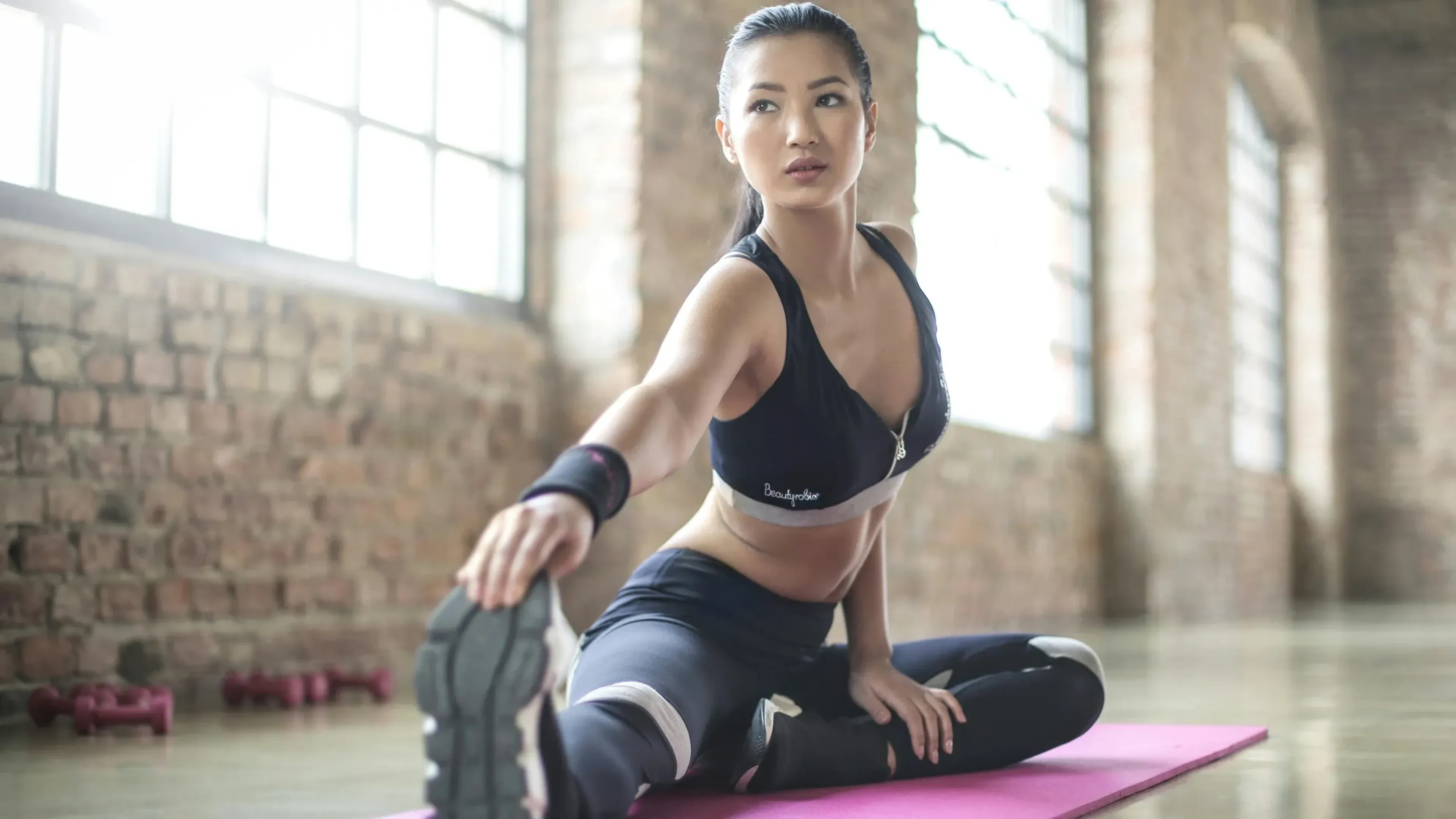
Frequently Asked Questions
- Q: How many reps should I use?
8–15 controlled reps per set works well for hypertrophy. Use a weight that lets you keep tension and a brief pause at peak contraction.
- Q: Where should the handles meet?
Aim to bring the handles together around upper-chest or neck height without shrugging. Stop where you can squeeze the pecs without the shoulders taking over.
- Q: How much elbow bend is ideal?
Keep a slight 15–25° bend and hold it throughout. Changing the angle mid-rep shifts tension away from the chest and toward the arms or shoulders.
- Q: When should I pick this over other fly variations?
Choose the low setup when you want to emphasize the upper chest and keep steady tension. Use middle or high positions when you want a more mid-chest or lower-chest emphasis.
Overview
- Primary Focus:
- Chest.
- Equipment:
- Cable.
- Difficulty:
- Intermediate.

